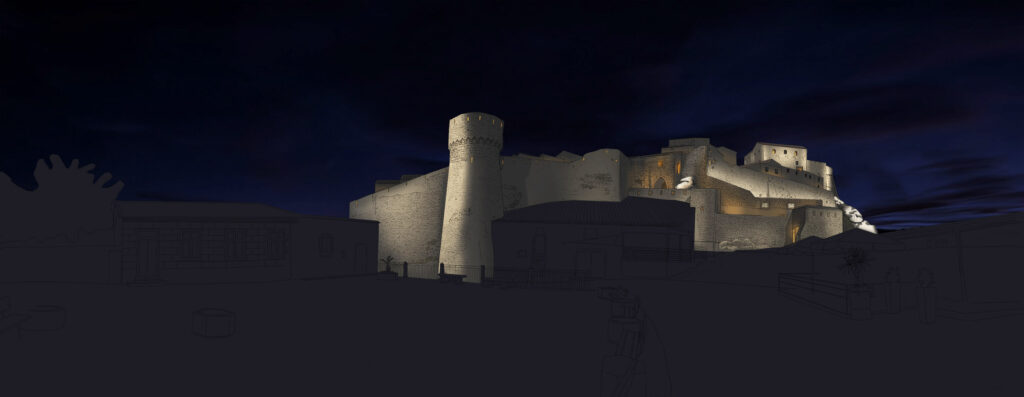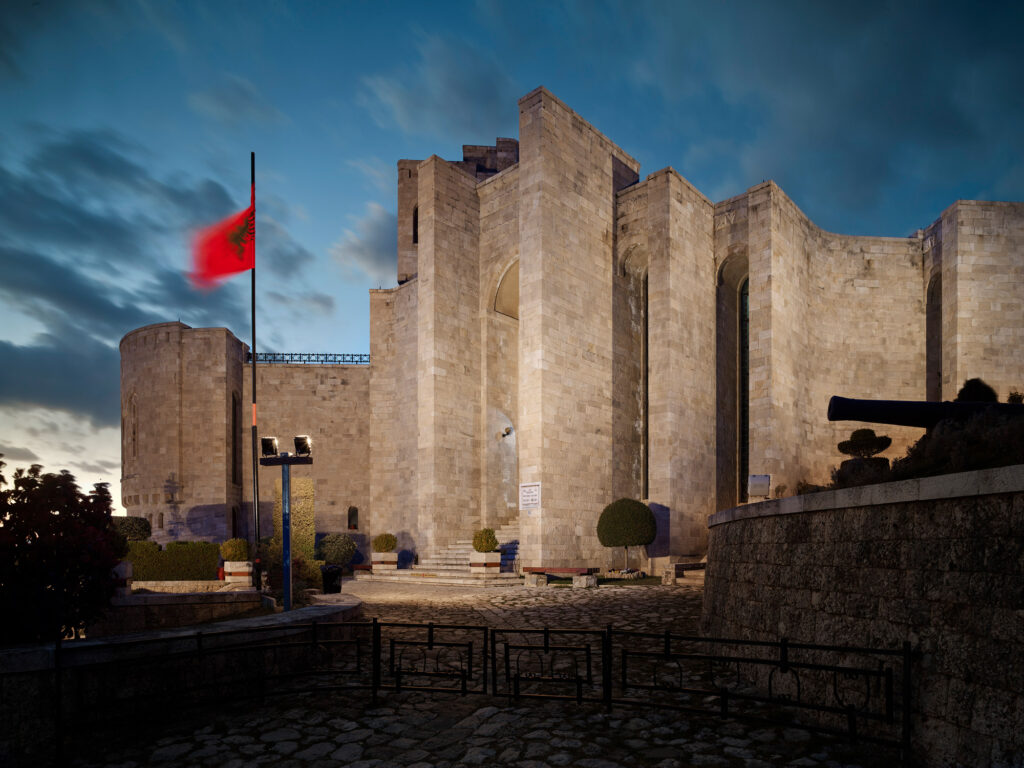On the international scene, the study of public lighting is still an underestimated topic; however, as we shall see, light can give a fundamental contribution to heritage enhancement and energy sustainability. The proper lighting of squares, monuments and historical villages is a smart investment for public administrations, for both economic and cultural reasons.
Following the development of high-efficiency LED sources, electricity consumption has dropped drastically, making it possible to have a better lighting with significantly lower costs: compared to a common sodium lamp, a LED source has a six times longer average lifespan, while consumption – with the same light flux – is almost half as much. Assuming a conversion from sodium to LED, the investment costs would be repaid over time in terms of consumption and maintenance, not to mention the considerably higher quality of the lighting.

The second and most important reason is the enhancement of our heritage. Our country is full of local realities of great historical and architectural value. These places struggle to find a place in the cultural sphere, often due to the lack of adequate funds, one of the most common problems is the poor accessibility at night: the main example being poorly lit squares and monuments, almost always by means of extremely warm-toned lights. In the past, lighting in our cities focused on making a place liveable trying to limit costs, while today’s tools allow us to think about the results without worrying about consumption. LED sources are adjustable in terms of light intensity and temperature, they are considerably smaller compared to the past, therefore the lighting designers can now concentrate on the qualitative aspects of their work: the importance of urban hierarchies and of points of view, the enhancement of materials and the attention to glare are just some of these.
One of the first occasions to discuss about this topic was in 2018, when the municipality of Giglio Island took an interest in the feasibility study for the new lighting in Giglio Castle. This fortified urban aggregation dates back to the early Middle Ages, when the Rocca Aldobrandesca was built. The city walls and the buildings inside, instead, date back to the 15th century, under the Pisan domination. As consultants, our goal was to identify potential strategies in order to improve the visual accessibility of the place, with the aim of both enhancing it to encourage tourism and making it more liveable for the people who live there. Therefore, the project was developed around five fundamental points: the enhancement of mineral and urban volumes, the enhancement and preservation of the heritage, the reduction of consumption and maintenance, the increase of the inhabitants’ sense of safety. The first studies were oriented towards a reinterpretation of the site’s natural and artificial components: the fortress rises on a bedrock, from which the outer walls and its bastions emerge, surrounding the buildings. These were the three elements that inspired the project.

The idea we followed was to contrast fire with the moon: the former, identified by a warm light, expresses human acting, the latter, characterised by a cold light, represents the natural element. By that logic, the small window guards and the openings of the buildings take on the extremely warm tones of the candle, recalling the life of the inhabitants inside, while the streets and squares present a slightly cooler tone, which fades into white in the outer perimeter of the walls; finally, the rock on which the entire castle rests is illuminated by a 4000K completely white light, that brings us back to the moonlight and thus to the natural element.
Once the initial idea had been defined, the main requirement was to restore the physiognomy of the urban volumes, reconstituting a complete view of the buildings. The first condition to be met was the glare reduction from sodium lamps. The solution adopted in urban routes consisted in working directly on the existing old lanterns, in order to preserve them implementing some improvements. The lamp is equipped with some orientable micro-spots with a diameter of less than two centimetres, capable of selecting the precise part to illuminate, eliminating glare and providing a full illumination of the surrounding elements. The lantern body, which contained the lamp, contains a LED engine of high efficiency and low light intensity. Lastly, the outer glass is replaced with a satin finish one to soften the emission.
The other solutions introduced include the management of the entire system in a revolutionary way: it will be possible to programme on/off scenarios and control them remotely, reducing lighting to the minimumif necessary or increasing it for summer events. The luminaires will have mobile phones tracking systems, position sensors and other devices to implement useful apps for the accessibility of the monuments, the system will then be able to interact with the context and the visitors, adapting to the various needs. The project for Giglio Castle has already been approved and it is estimated that work will start next year.
Light Company has collaborated and continues working on other similar projects, in 2018 it also was part of a group of designers appointed by the municipality of Fabriano to develop a new lighting system for the city; as in the case of Giglio Island, Light Company guided the monumental and artistic design of the project, focusing on the analysis of urban perspectives and on the cultural meaning of the areas to illuminate.

In 2020, the study was the winner of a competition organised by the Albanian Ministry of Culture to cast a new light on nineteen castles located throughout the territory.Thisimportant assignment allowed us to apply the studies carried outso far to another different context: the nineteen “castles” are nothing more than fortified settlements, mostly from the Ottoman period, no longer inhabited. Currently, four of the nineteen castles have been completed: Rozafa, Argirokaster, Berat and Kruje. The key aspects of these projects were the enhancement of each castle’s iconic elements, the visual reconstruction of the perimeter wall and the management of the light intensity and temperature to reconstitute the hierarchies of the elements. The work focused on identifying the common aspects of each castle: the defensive bastions, the civil and religious buildings, the internal paths and the neglected ruins, in order to trace back a link for a uniform reading: once these elements had been identified, the objective was to enhance their meaning through the light. In this perspective the small and hidden walkways, as well as the indoor spaces would present a warm and dim light, which once again recalls the time in which candles and fires illuminated the inhabitants’ nights. In the outer perimeter the light is cooler, to help visualize the various shades of colour of the stone, the embossed bastions are illuminated by an oblique light, which creates light and shade increasing the statuesque effect.

The work in Albania showed that a lot can be achieved even with a limited budget. Making the workflow faster and more efficient played an important role in limiting delays and changes which would have increased costs over time.
The work has been greatly appreciated by the institutions and the community, raising interest and sensitivity in the issue. We are now dedicating our energy to new assignments which, we hope, will consolidate the importance of lighting in our country.
